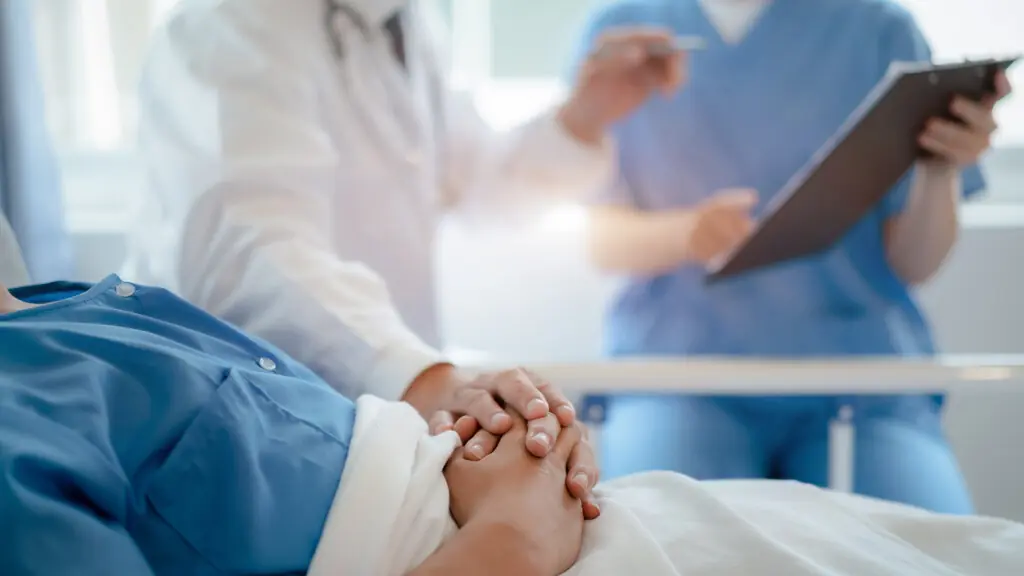While the shift from hospital to community care and a greater emphasis on technology have been broadly welcomed, doctors want more details on how this will happen.
The British government has launched its long-anticipated 10 Year Health Plan, which is underpinned by what it calls “three key shifts”. This will move care from hospitals into the community, a greater emphasis on technology, and a priority given to preventative medicine.
Prime minister Keir Starmer said that the plan would “fundamentally rewire and future-proof our NHS”.
The government’s plan follows Lord Darzi’s diagnosis of the challenges facing the NHS last year where he assessed it was in a “critical condition” as a result of deep-rooted issues including low productivity, poor staff morale, a failure to keep up with new technology, rising waiting times, and a deterioration in the health of the nation.
Shifting care out of hospitals and into the community hopes to ease the pressure on hospitals.
Neighbourhood health centres, with a range of staff, will provide easier access to healthcare services. The intention is that community health workers and volunteers will play a pivotal role in these teams.
“By shifting from hospital to community, we will finally bring down devastating hospital waiting lists and stop patients going from pillar to post to get treated,” said health and social care secretary Wes Streeting.
Under the plan, the government has said that it intends to train thousands of GPs.
Rearranging deck chairs
The plan has been cautiously welcomed by the medical sector.
“From what we’ve seen so far, the broad ambitions of the 10 Year Health Plan – strengthening primary and community services, boosting prevention and harnessing new technology to help make it happen – are the right direction for the NHS,” said Jennifer Dixon, chief executive of the Health Foundation.
Similarly, Kamila Hawthorne, chair of the Royal College of GPs, said that she is supportive of the government’s aspiration to shift care out of hospitals and into the community.
“It’s what is best for the NHS and, most importantly, it’s what is best for patients who want accessible care close to home without long waits for appointments either with their GP or at hospital – but we’ve always been clear that sufficient resources and numbers of GPs will need to follow to make this a reality,” she said.
But new BMA council chair Tom Dolphin summed up the feeling of the profession. “The success of the Plan, and whether it will improve patients’ care and the public’s lives, will hinge on whether it genuinely addresses the workforce shortages, and values and empowers professionals on the front line, or just rearranges deck chairs on a sinking ship,” he said.

The need for challenger thinking
The government is hoping that its greater emphasis on technology will make the NHS more accessible and more efficient.
Its plans include rolling out new tools like AI scribes over the next two years to support GPs. These, it says, will end the need for clinical notetaking, letter drafting and manual data entry to free up clinicians’ time to focus on treating patients. The government estimates that saving just 90 seconds on each GP appointment can save the same time as adding 2,000 more doctors into general practice.
It also intends to use digital telephony so that all phone calls to GP practices are answered quickly.
Again, this was broadly welcomed.
“We strongly support the commitment to boosting GP availability, expanding neighbourhood health centres, and introducing cutting-edge technologies such as AI-assisted documentation and robotic surgery,” said George Maughan, director at healthcare insurance specialists THEMIS Clinical Defence. “We firmly believe that emerging technologies are crucial to the future of healthcare – provided they are rigorously tested, benchmarked, and evaluated before widespread implementation.”
Barbara Hakin, chair of the Health Tech Alliance and former deputy chief executive of NHSE, said that she was pleased to see the prominent role given to digital and tech innovation. This shows “a clear understanding that modern healthcare must be both resilient and responsive to patient needs,” she said.
But many in the industry would have liked the government’s plans to go further.
Ian Burgess, CTO at Canary Care, a provider of smart home monitoring technology, said that calls for innovation and digital transformation must be matched by real, practical action.
“If the government is truly committed to supporting people, especially those living alone or with complex needs, then social care technology must be at the core of delivery, not sitting on the sidelines,” he said, highlighting the fact that too many local authorities and NHS teams are still struggling to access and implement the technology that makes a difference.
He called on ministers to be even more ambitious, a call that was echoed by Harry Thirkettle, a former NHS surgeon turned clinical entrepreneur who now heads up Health Innovation at Leeds-based consultancy Aire Logic. “These ambitions need to be backed by the kind of challenger thinking that reshaped industries like banking, where brands like Monzo started from user needs, not inherited systems.”

Devil in the details
The challenge is that, as always, the devil will be in the details.
“While [the government’s plan] lays the foundations for an exciting future, the pace of change and the cost of implementation will need to be carefully balanced to bring this document to life and to fulfil its promise,” said Jill Mason, partner and head of health & care at law firm Mills & Reeve.
“Simply saying that the approach will be rolled out, without full details on how to bring it about, casts doubt on whether it will stick,” agreed Thea Stein, chief executive of the Nuffield Trust.
“This is hard, complex work, requiring leadership from politicians and NHS staff alike to challenge cultures and power dynamics, and create new ways to route money through the system so it doesn’t get sucked into the pressing and often urgent needs of other parts of the health service,” she continued.
It is also crucial that legislation keeps up. “The shift from analogue to digital requires a regulatory rethink on our approach to accessing and sharing personal health data with healthcare providers and other relevant bodies,” said Gerard Hanratty, head of health and life sciences at law firm Browne Jacobson. Robust cyber security measures, widespread digital literacy campaigns and policies ensuring equitable access to digital health tools are needed, he said, as well as establishing clear ethical guidelines and standards for AI development and deployment, underpinned by rigorous testing and evaluation.
As the BMA’s Dolphin concludes. “We’ll need to see the full details to assess whether this will be possible,” he says.



